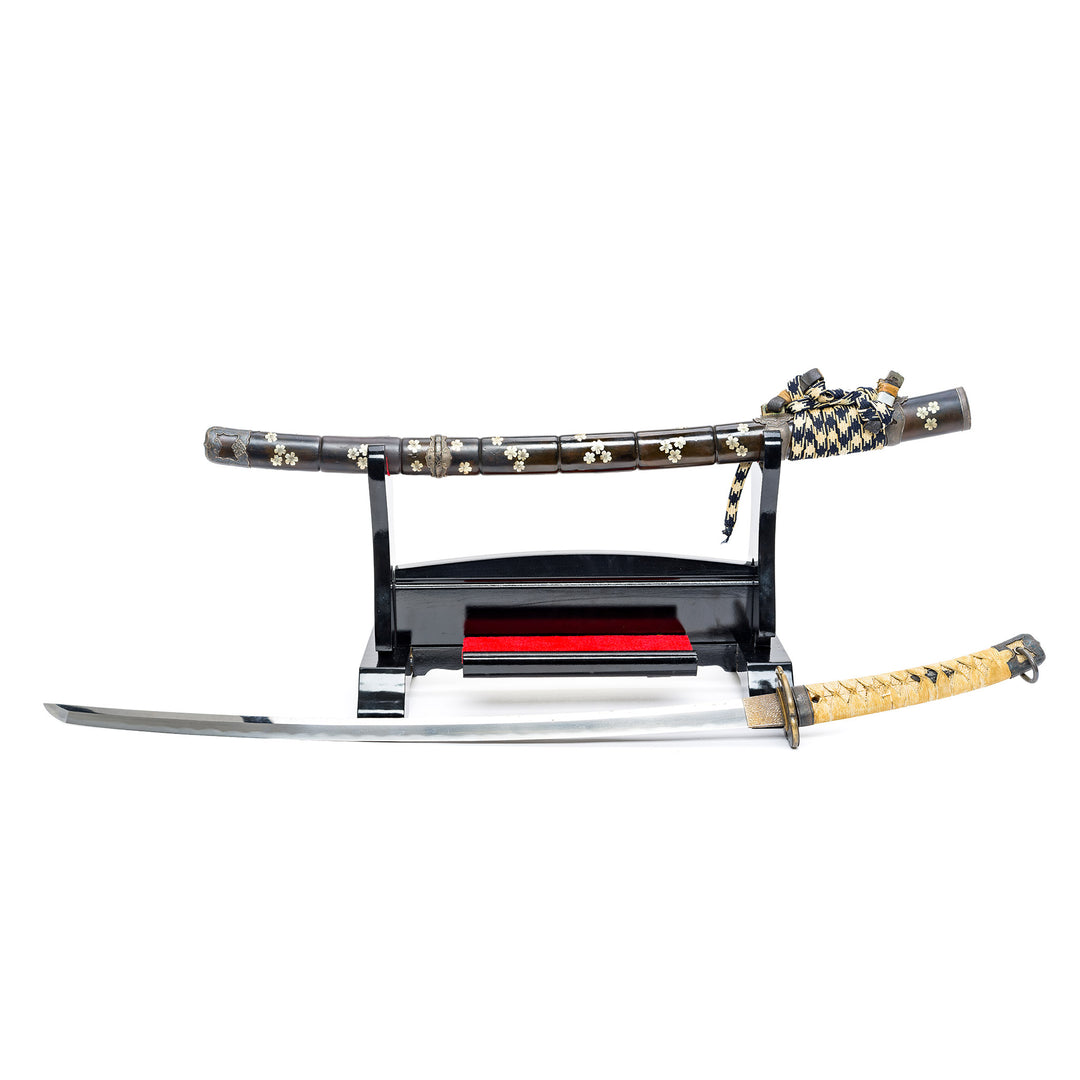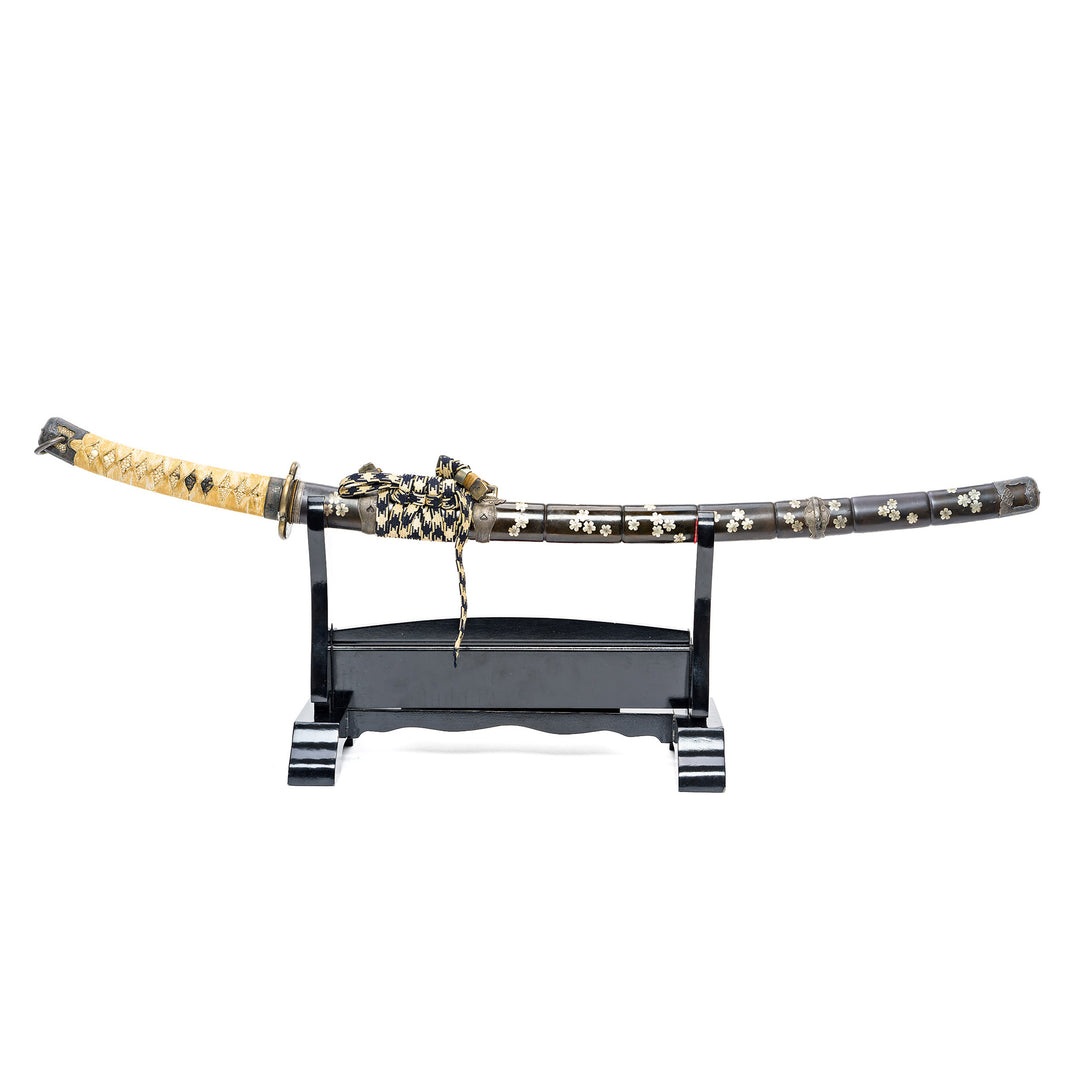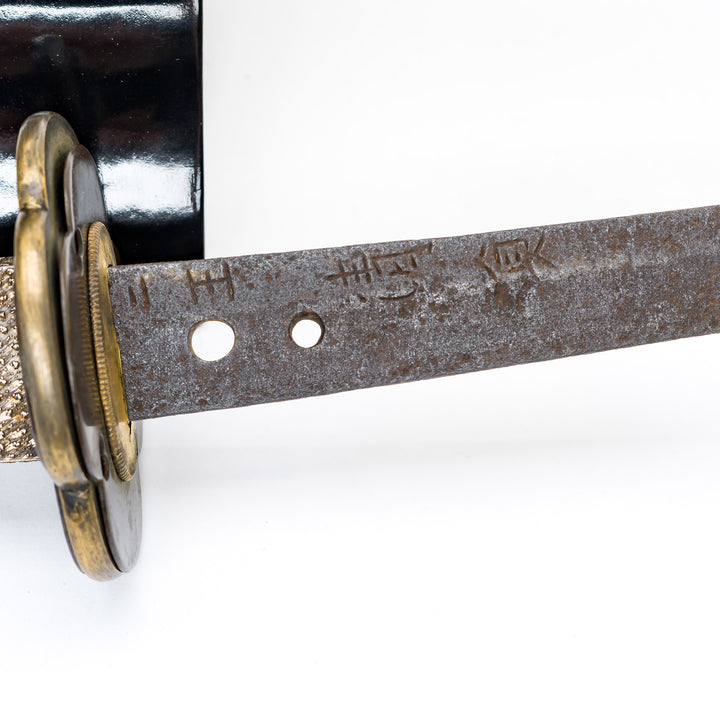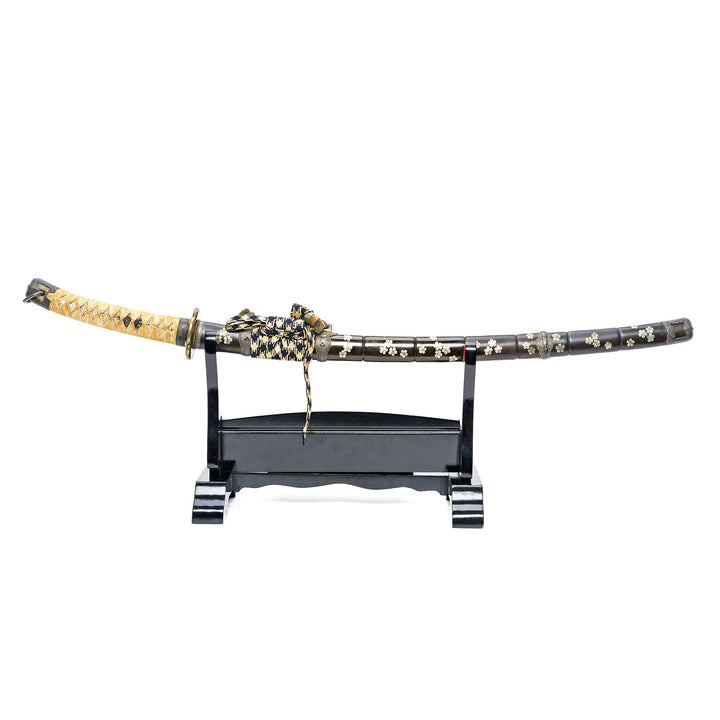Muramasa Japanese Katana
17403
Forged by Legend: A Blade of Myth and Mastery
- Origin: Attributed to Muramasa, Muromachi Period (16th century), Ise Province
- Mountings: Black lacquered saya with white sakura motifs
- Blade Features: Subtle curvature, mirror polish, rhythmic wavy hamon, visible hada
- Handle: Black-and-white tsuka-ito in diamond pattern with matching fittings
- Tang: Signed “村正” with twin mekugi-ana and aged patina
- Symbolism: Represents samurai spirit, impermanence, and legendary craftsmanship
This authentic Muramasa katana emerges from the storied depths of 16th-century Japan—a weapon forged by one of the most feared and revered swordsmiths in history. Attributed to Muramasa of the Ise Province during the Muromachi Period, this blade embodies both peerless sharpness and mythic aura. Feared by shoguns and surrounded by legends of bloodlust, Muramasa blades were as much talismans as they were tools of war.
Myth, Mastery, and Muramasa’s Legacy
Muramasa’s swords are steeped in lore—said to compel bloodshed and misfortune. Despite their ominous reputation, they were praised by warriors for their lethal efficiency and flawless design. Banned by ruling dynasties, few genuine examples remain, making this katana a rare survivor of both history and superstition.
Timeless Muromachi Bladework
The blade displays a classical katana silhouette: subtly curved, brilliantly polished, and adorned with a flowing hamon. The visible hada reveals its layered steel construction, while the hamon—like waves across a battlefield—attests to the smith's controlled, purposeful chaos during forging. These features echo the aesthetic and martial philosophies of the samurai era.
Historic Tang with Muramasa Signature
The nakago (tang) bears visible signs of age, with twin mekugi-ana peg holes, aged patina, and hand-filed markings. Most notably, it is inscribed with the signature “村正,” linking it to authentic examples in both private and museum collections. These indicators speak to its preservation and historical lineage.
Elegant Mountings with Samurai Symbolism
The saya (scabbard) is finished in high-gloss black lacquer, adorned with soft white sakura blossoms—symbolizing the transient beauty of life, a core ideal of bushidō. The contrast speaks to the delicate balance of power and impermanence in the samurai worldview.
Traditional Tsuka with Black-and-White Flair
The tsuka features a bold black-and-white cord wrap in a traditional diamond weave. This striking design not only enhances grip but reflects the era’s refined combat aesthetics. Matching fittings add a touch of unity and purpose, making it both a functional weapon and a visual masterpiece.
Key Features of the Muramasa Katana
- School: Muramasa, Ise Province
- Period: Muromachi Period, 16th century
- Blade: Curved katana with hamon and hada grain patterns
- Signature: Boldly inscribed “村正” on the tang
- Mountings: Black lacquered saya with sakura design, black-and-white tsuka-ito
- Symbolism: Mythical legacy, impermanence, martial honor
Frequently Asked Questions
What is the Muramasa Katana?
The Muramasa Katana is an authentic 16th-century Japanese sword attributed to the legendary swordsmith Muramasa. Known for its superior sharpness and rich mythological history, this blade exemplifies both deadly precision and the spiritual weight of samurai tradition.
Why are Muramasa swords considered cursed?
Historically, Muramasa swords were believed to incite bloodshed and tragedy. This superstition led some shoguns to ban their use. While the curse is folklore, the blades’ reputation for unmatched sharpness and eerie allure has fueled their legendary status.
How old is this katana?
This Muramasa blade dates back to the 16th century Muromachi Period, making it over 400 years old.
What features confirm this is a genuine Muramasa blade?
The tang bears the signature “村正,” and exhibits twin mekugi-ana, aged patina, and traditional file markings consistent with Muramasa’s school. These features are supported by comparable examples found in verified collections.
What is the weight of this katana?
The exact weight may vary, but traditional katanas with full mountings typically weigh between 2.2 and 3.3 pounds (1–1.5 kg). Contact us for specific measurements.
What materials are used in the mountings?
The saya is black lacquered wood with hand-applied sakura detailing. The tsuka is wrapped with black-and-white tsuka-ito, accented with traditional fittings crafted for both aesthetics and grip.
How should I maintain an antique Japanese katana?
Keep the sword in a stable, dry environment. Lightly oil the blade using choji oil and avoid direct contact with bare hands. Clean lacquered surfaces gently with a soft cloth. Professional assessment is recommended for long-term preservation.














